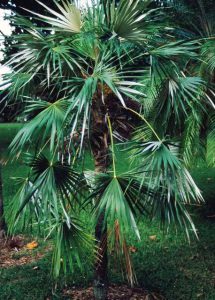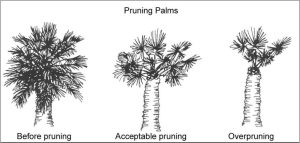Although Florida is home to countless numbers of palms, the list of palms that are actually native to Florida is remarkably short, among them being the Florida Silverpalm (Coccothrinax argentata), so named because of the bluish-silver undersurface of the fronds. Being a native plant, the Silverpalm plays an important role in supporting the food and habitat ecosystem for Florida’s bird and deer population. To learn more about how Florida’s native plants support local wildlife click on this link.
Planting site
Silverpalms have a solitary growth habit, grow well in full- to partial- sun and prefer well-drained soils. Under ideal conditions they can grow to 15 ft. tall with a canopy 6 ft. wide. Click on the link to learn more about Silverpalms.
 Nutrient requirements
Nutrient requirements
Many of the nutrient deficiencies that are common in other palms (e.g. potassium deficiency) are not commonly seen in Silverpalms. To learn more about nutrient deficiencies and palm nutrition, click on these links: potassium deficiency and fertilizing palms.
Pests and diseases
Silverpalms are not host to any pests or diseases of major concern. Click on the link for more information on pests and diseases which affect palms.
Pruning
Because palms recycle nutrients from older fronds to newer fronds, when pruning palms, green fronds should not be removed. Pruning should be reserved for spent flower stalks, immature fruit, and brown fronds. Over-pruned palms are more susceptible to nutrient deficiencies, pests and diseases.
Click on the link to learn more about pruning palms.
 1
1

